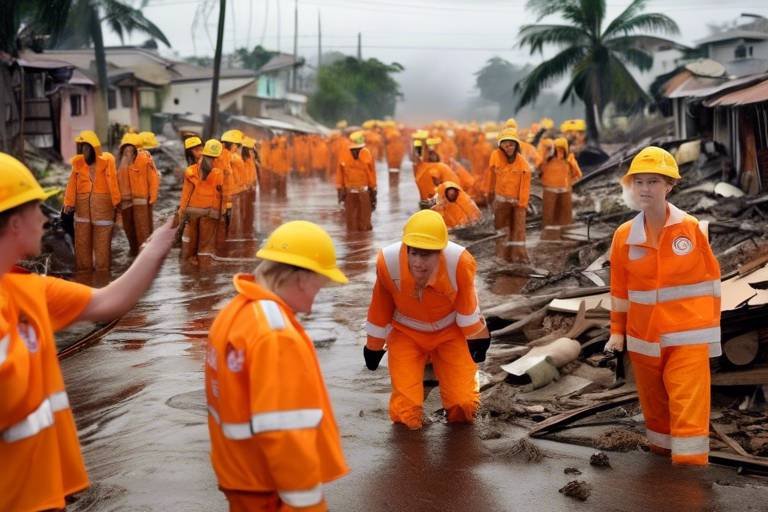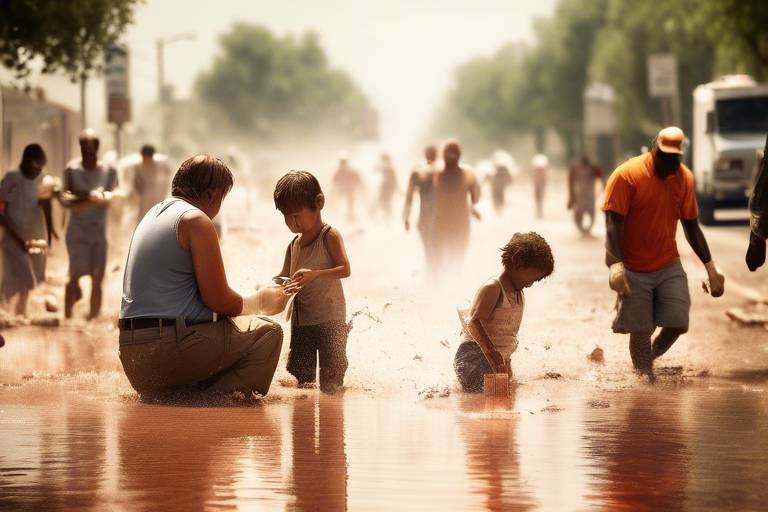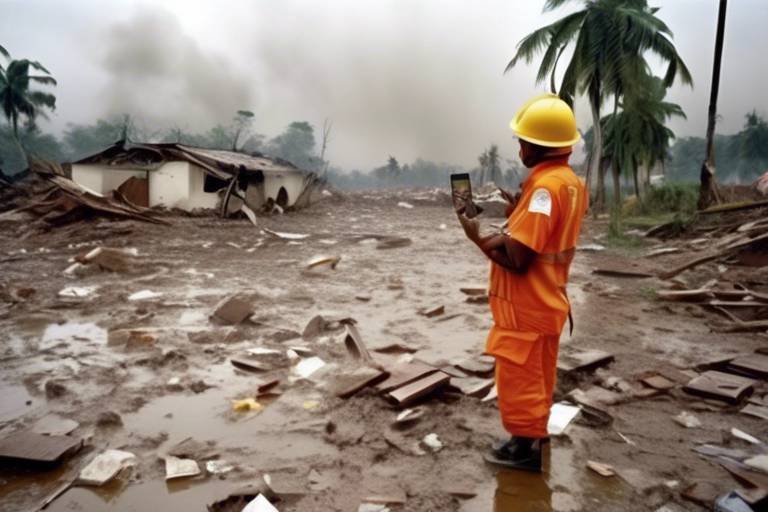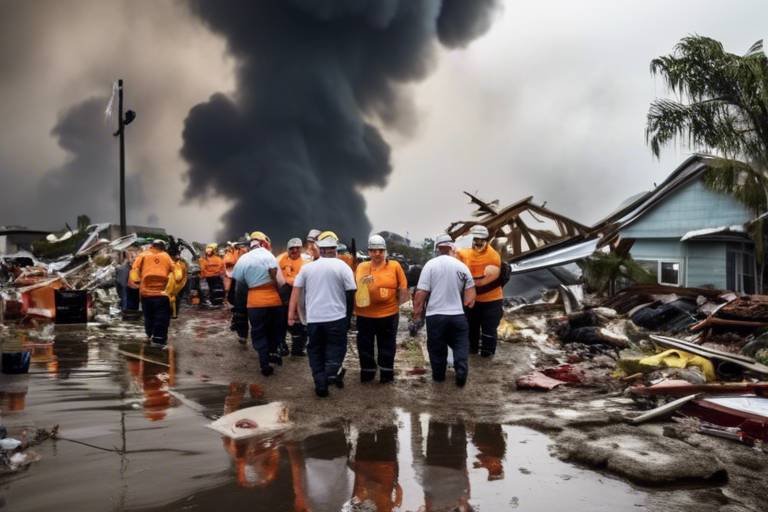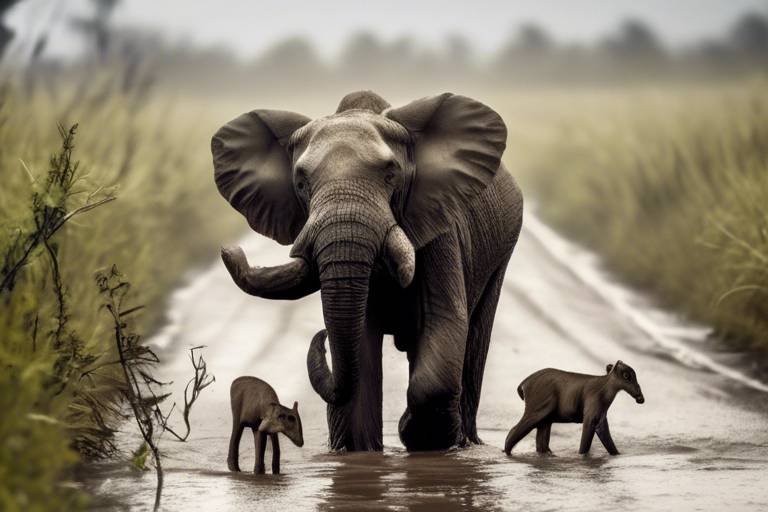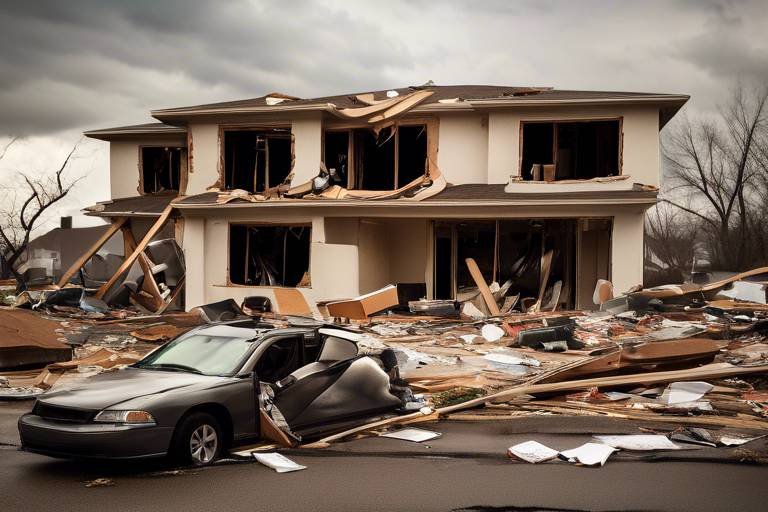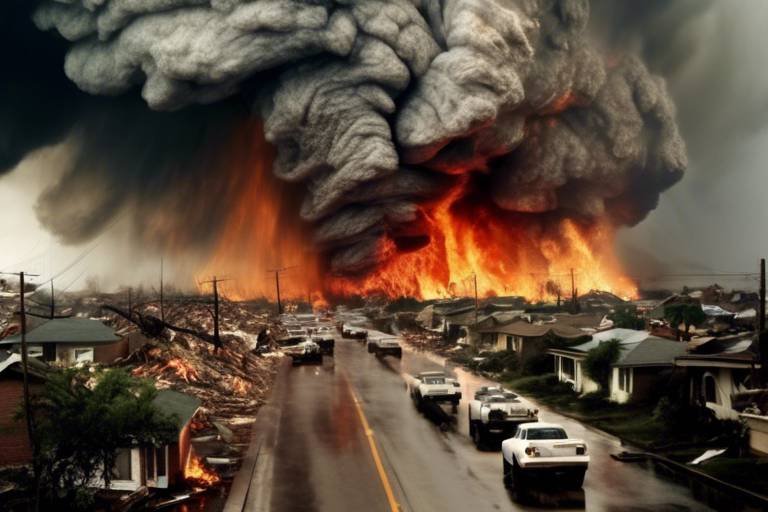Role of Volunteers in Natural Disaster Management
When disaster strikes, the impact can be devastating, leaving communities reeling and in desperate need of assistance. In these critical moments, volunteers emerge as unsung heroes, stepping up to provide essential support and services. Their contributions are not just important; they are often the backbone of disaster response efforts. From providing immediate medical assistance to helping with logistical operations, volunteers play a multifaceted role that can significantly influence the outcome of recovery efforts.
Imagine a community hit by a natural disaster, such as a hurricane or earthquake. The roads are blocked, communication lines are down, and emergency services are overwhelmed. In such chaotic situations, volunteers step in with a sense of urgency and a willingness to help. They often bring a diverse range of skills and backgrounds, making them invaluable assets. Whether they are trained professionals or community members with a desire to make a difference, their collective efforts can save lives and restore hope.
Moreover, the spirit of volunteerism fosters a sense of community and solidarity. It transforms individuals into a cohesive unit, united by a common purpose. This not only aids immediate relief efforts but also helps build long-term resilience within the community. Volunteers often become the glue that holds a community together during the most challenging times, reinforcing the idea that together, we are stronger.
However, the role of volunteers extends beyond the immediate aftermath of a disaster. They are crucial in the recovery phase, helping communities rebuild and heal. Their presence can provide emotional support to those affected, showing that they are not alone in their struggles. By participating in recovery efforts, volunteers help to restore a sense of normalcy and hope, which is vital for long-term healing.
In summary, the role of volunteers in natural disaster management is profound and far-reaching. They are not just participants; they are leaders, caregivers, and advocates for those in need. As we continue to face the challenges posed by natural disasters, it is essential to recognize and support the vital contributions of volunteers. Their unwavering commitment and compassion can make all the difference in the world, turning despair into hope and chaos into recovery.
- What types of training do volunteers receive for disaster management? Training varies but often includes first aid, search and rescue techniques, and logistical support skills.
- How can I get involved as a volunteer during a disaster? You can reach out to local organizations, disaster response agencies, or community groups that coordinate volunteer efforts.
- What are the most common challenges volunteers face? Volunteers often deal with physical exhaustion, emotional stress, and resource limitations during disaster response efforts.
- Can volunteers make a significant impact in disaster recovery? Absolutely! Volunteers play a crucial role in both immediate response and long-term recovery, helping to restore communities and provide necessary support.

The Importance of Volunteerism
This article explores the critical contributions of volunteers during natural disasters, highlighting their roles, challenges, training, and the impact they have on communities in crisis situations.
Understanding the significance of volunteer efforts in disaster management can illuminate how communities come together to provide assistance and support during emergencies, ultimately saving lives and resources. When a natural disaster strikes, the immediate response often hinges on the willingness of ordinary people to step up and help. Volunteers are the unsung heroes who bring hope and aid when it is needed most. Their efforts not only assist in immediate relief but also foster a sense of unity and resilience within affected communities.
In many cases, volunteers are the first responders, providing critical support before official agencies can mobilize. Their presence can significantly uplift the spirits of those affected, reminding them that they are not alone in their time of need. The emotional and psychological impact of having someone there who genuinely cares cannot be overstated. It's like a warm blanket on a cold night, offering comfort amidst chaos.
Moreover, volunteerism promotes a culture of preparedness. Communities that engage in volunteer activities often develop better response strategies and stronger networks. When individuals take part in training and simulations, they not only equip themselves with essential skills but also encourage others to do the same. This collective readiness can be the difference between life and death during a disaster.
As we dig deeper into the role of volunteers, it becomes evident that their contributions extend beyond the immediate aftermath of a disaster. They often participate in long-term recovery efforts, helping communities rebuild and regain a sense of normalcy. The ripple effect of their actions can lead to improved infrastructure, better emergency plans, and a more resilient population overall.
To illustrate the impact of volunteerism in disaster management, consider the following table that summarizes key benefits:
| Benefit | Description |
|---|---|
| Immediate Response | Volunteers provide critical aid and support during emergencies, often before official responders arrive. |
| Community Cohesion | Their presence fosters a sense of unity and solidarity among residents, enhancing emotional support. |
| Skill Development | Volunteers gain valuable skills through training, which can be applied in future emergencies. |
| Long-term Recovery | They assist in rebuilding efforts, ensuring communities recover and thrive post-disaster. |
In conclusion, the importance of volunteerism in natural disaster management cannot be overstated. These dedicated individuals not only provide essential services but also strengthen the fabric of their communities. Their actions remind us that in times of crisis, humanity shines brightest when we come together to help one another.
- What types of roles do volunteers typically take on during disasters?
Volunteers can serve in various capacities, including first responders, medical assistants, and logistical support personnel.
- How can someone become a volunteer in disaster management?
Individuals can get involved by joining local organizations, attending training sessions, and participating in community preparedness initiatives.
- What challenges do volunteers face during disasters?
Volunteers often encounter physical exhaustion, emotional stress, and resource limitations that can impact their effectiveness.
- How do volunteers impact community recovery?
Their contributions enhance community resilience and assist in long-term recovery efforts, helping communities rebuild and recover.
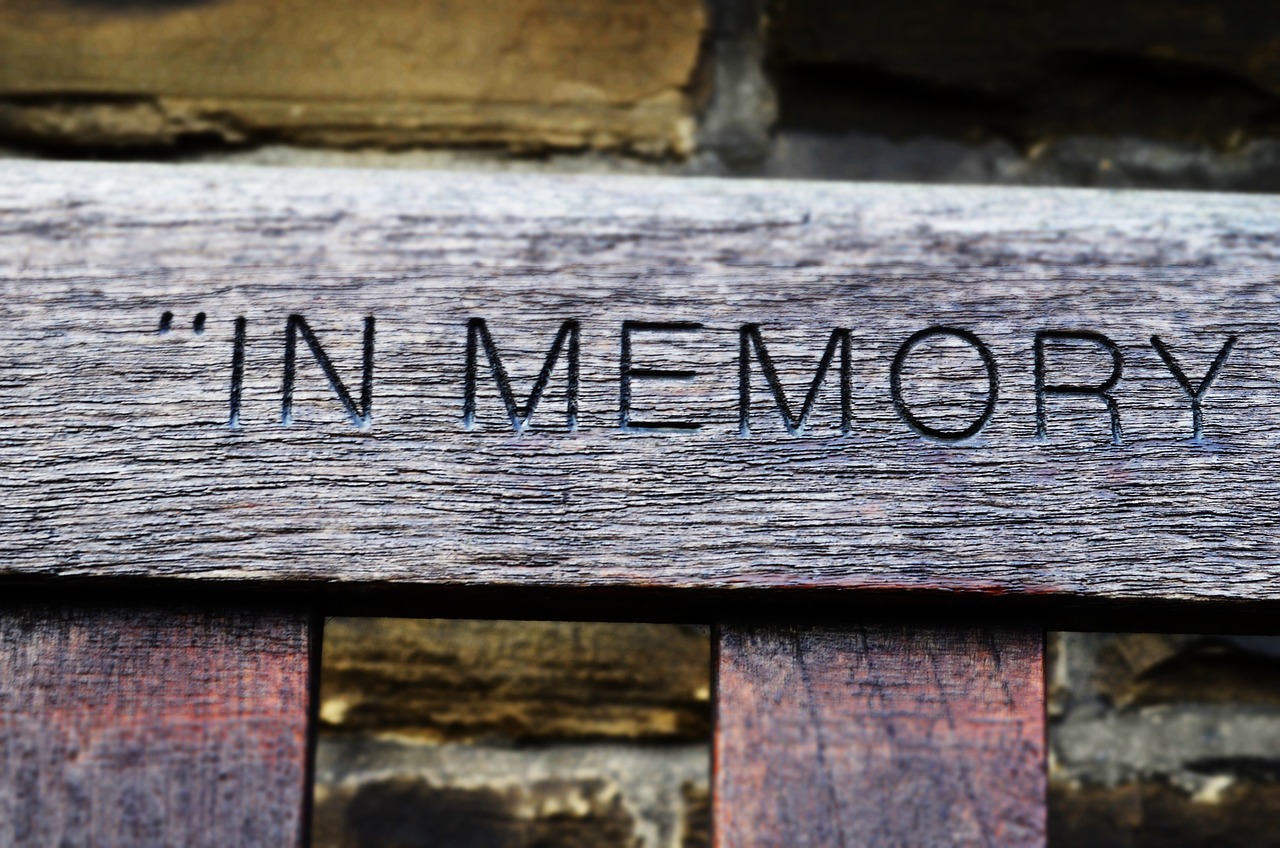
Types of Volunteer Roles
When a natural disaster strikes, the community often springs into action, and a myriad of volunteer roles emerge to address the urgent needs of those affected. Understanding these roles is crucial because each one plays a significant part in the overall response and recovery process. Volunteers can be found in various capacities, contributing their unique skills and expertise to ensure that help reaches those in dire situations. From the adrenaline-fueled first responders to the meticulous logistical support teams, the diversity of volunteer roles highlights the collective effort required to tackle the challenges posed by disasters.
One of the most visible and impactful roles is that of the first responders. These brave individuals are often the first to arrive on the scene, providing immediate assistance and care. Their actions are vital, as they can significantly reduce the impact of disasters on affected populations. Within this category, we find:
- Medical Assistance: Volunteers with medical training play a critical role in delivering healthcare services during disasters. They perform essential tasks such as triage and first aid, ensuring that those injured receive timely medical attention. Their skills can be the difference between life and death.
- Search and Rescue: These volunteers are dedicated to locating and assisting individuals who may be trapped or missing after a disaster. They often work under challenging conditions, facing adverse weather and unstable environments, but their determination and skill are crucial for saving lives.
Beyond the first responders, volunteers also take on logistical support roles, which are equally important for a smooth disaster response. These volunteers manage the distribution of supplies, oversee shelter operations, and coordinate transportation of resources. Their behind-the-scenes work ensures that aid reaches those in need efficiently and effectively, allowing first responders to focus on immediate life-saving efforts.
In essence, the variety of volunteer roles during natural disasters illustrates the strength of community action. Each volunteer, regardless of their specific role, contributes to a larger mission of recovery and support. Their collective efforts not only provide immediate relief but also foster a sense of hope and solidarity among affected populations. As we delve deeper into the importance of training and preparedness for these volunteers, it becomes evident that their impact goes beyond the immediate crisis, laying the groundwork for long-term recovery and resilience.
What types of volunteers are most needed during a disaster?
During a disaster, there is often a high demand for medical professionals, search and rescue teams, and logistical support volunteers. Each of these roles is critical in addressing the immediate needs of affected individuals.
How can I become a volunteer in disaster management?
To become a volunteer, you can reach out to local disaster response organizations or community groups. Many organizations offer training programs to prepare volunteers for effective disaster response.
What challenges do volunteers face during disasters?
Volunteers often encounter physical exhaustion, emotional stress, and logistical challenges. It's essential for organizations to provide adequate support and resources to help volunteers cope with these difficulties.
How do volunteers impact long-term recovery after a disaster?
Volunteers play a crucial role in long-term recovery by helping communities rebuild and recover. Their ongoing support ensures that affected populations receive the necessary assistance to return to normalcy.
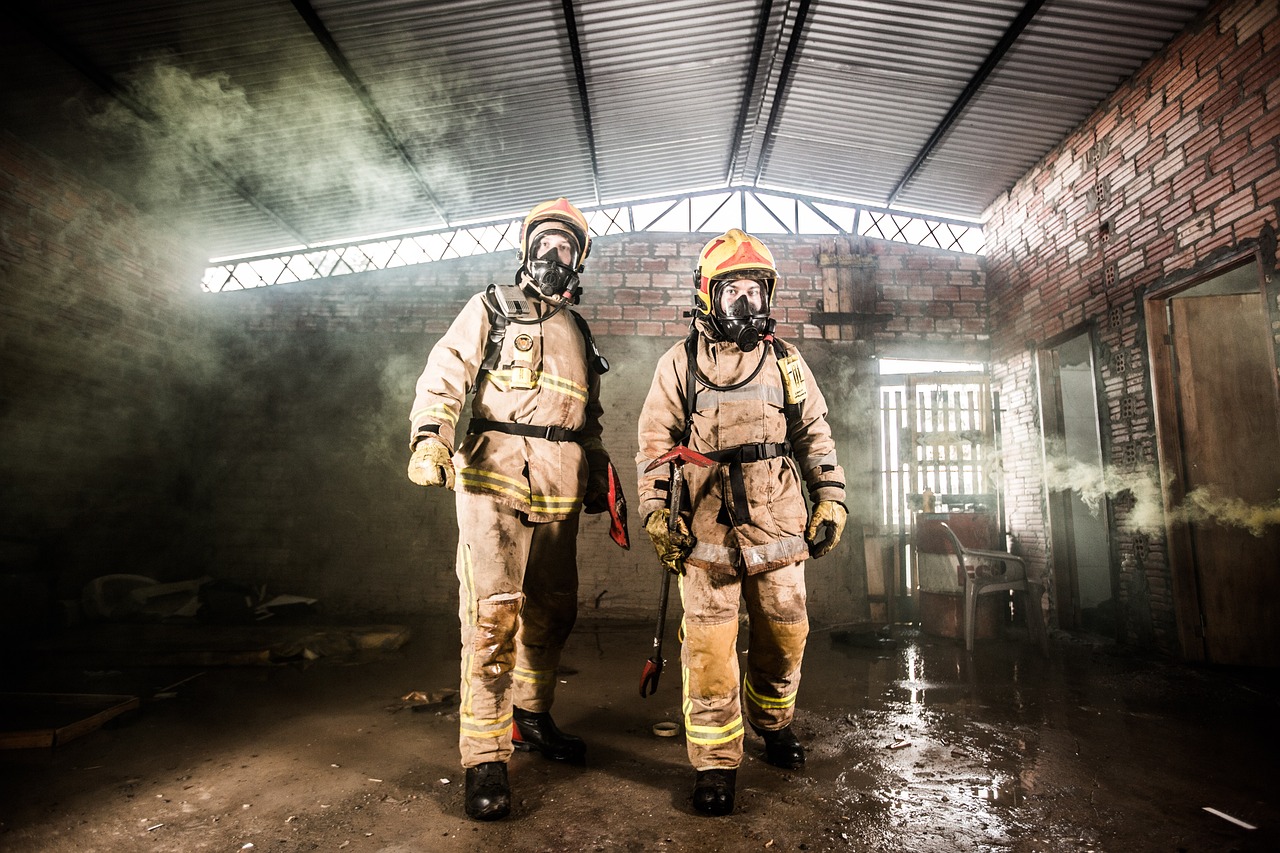
First Responders
When disaster strikes, the are the unsung heroes who spring into action, often risking their own safety to help others. These dedicated individuals are typically the first line of defense in emergencies, and their quick, decisive actions can mean the difference between life and death for those affected. Imagine a chaotic scene where every second counts; it’s the first responders who race against time, armed with training and compassion, ready to provide immediate assistance and care.
First responders come from various backgrounds and possess a wide range of skills that are crucial during emergencies. They include:
- Emergency Medical Technicians (EMTs): Trained to provide critical medical care, EMTs assess injuries, perform life-saving procedures, and transport patients to medical facilities.
- Firefighters: Not only do they extinguish fires, but they also perform rescues and provide medical assistance in disaster scenarios.
- Police Officers: They maintain order, assist with evacuations, and ensure the safety of both victims and other responders.
- Community Volunteers: Ordinary citizens trained to assist in various capacities, providing support wherever needed.
These first responders often work under extreme pressure, facing numerous challenges such as hazardous environments, limited resources, and the emotional weight of witnessing suffering. Their ability to remain calm and focused is nothing short of remarkable. For instance, when a natural disaster like an earthquake occurs, first responders must quickly assess the situation, prioritize tasks, and coordinate with other agencies to ensure that help is provided efficiently.
Moreover, the impact of their work extends beyond immediate response. The presence of first responders can instill a sense of hope and security in a community reeling from disaster. Their compassion and dedication can uplift spirits, reminding those affected that they are not alone in their struggle. It’s a powerful reminder of the human spirit’s resilience, showcasing how, even in the darkest times, help is on the way.
In summary, first responders play a vital role in disaster management, embodying the essence of community service and sacrifice. Their commitment to saving lives and supporting affected individuals is a testament to the strength of humanity in the face of adversity. As we reflect on their contributions, it becomes clear that these individuals are not just responders; they are the heartbeat of disaster relief efforts, ensuring that hope and healing follow in the wake of devastation.
Q: What training do first responders undergo?
A: First responders typically undergo extensive training, including CPR, first aid, and specialized courses relevant to their roles, such as firefighting or emergency medical response.
Q: How can I become a first responder?
A: You can become a first responder by enrolling in training programs offered by local emergency services, community colleges, or volunteer organizations.
Q: What challenges do first responders face during a disaster?
A: First responders face numerous challenges, including physical exhaustion, emotional stress from witnessing trauma, and logistical hurdles such as communication breakdowns and resource shortages.
Q: How do first responders coordinate with each other?
A: Effective communication and established protocols are key to coordination among first responders. They often use radios and other communication tools to share information and strategize their response.

Medical Assistance
In the chaotic aftermath of a natural disaster, the presence of volunteers trained in medical assistance can be a literal lifeline for those in need. These dedicated individuals step into the fray, often without hesitation, to provide crucial care to the injured and vulnerable. Their roles can vary widely, from offering basic first aid to performing more advanced medical procedures, depending on their training and expertise. This adaptability is vital, as disaster scenarios can change rapidly, requiring volunteers to think on their feet and respond effectively to evolving situations.
One of the primary responsibilities of medical volunteers is triage. This process involves assessing patients' conditions to prioritize treatment based on the severity of their injuries. In a disaster setting, where resources may be limited and the number of casualties high, effective triage can mean the difference between life and death. Volunteers often work alongside professional medical personnel, creating a synergistic effect that maximizes the care provided. The ability to triage effectively is not just about medical skills; it also requires strong communication and teamwork, as volunteers must relay critical information to healthcare professionals who are managing the overall response.
Additionally, volunteers with medical training play a crucial role in providing psychological first aid. Disasters can leave emotional scars as profound as physical injuries. By offering support and reassurance, volunteers help individuals cope with the trauma they’ve experienced. This aspect of medical assistance is often overlooked but is essential for holistic recovery. Volunteers are trained to recognize signs of emotional distress and to provide a listening ear or a comforting presence, which can be incredibly healing.
The training that these volunteers undergo is comprehensive and crucial for their effectiveness. Many organizations offer specialized workshops that cover a variety of medical topics, including:
- Basic first aid and CPR
- Triage techniques
- Wound care
- Managing shock and trauma
- Psychological first aid
Through these training programs, volunteers not only enhance their medical knowledge but also build confidence in their ability to act decisively in emergencies. This confidence is vital, as the pressure during a disaster can be immense. Volunteers must be prepared to face not only the physical challenges of providing care but also the emotional strain of witnessing suffering and loss.
In summary, the role of volunteers in providing medical assistance during natural disasters is invaluable. Their quick actions and compassionate care can significantly alleviate the suffering of those affected, making a lasting impact on the recovery process. As communities continue to face the threat of natural disasters, the need for well-trained medical volunteers will only grow, highlighting the importance of ongoing training and preparation.
Q: What qualifications do medical volunteers need?
A: While formal medical training is beneficial, many organizations accept volunteers with basic first aid skills. However, having certifications in CPR and first aid is highly recommended.
Q: How can I get involved as a medical volunteer?
A: Interested individuals can reach out to local disaster response organizations or healthcare facilities to inquire about volunteer opportunities and training programs.
Q: What types of disasters require medical volunteers?
A: Medical volunteers are needed in various disaster scenarios, including hurricanes, earthquakes, floods, and wildfires, where injuries and health crises are likely to occur.
Q: Is there training available for new volunteers?
A: Yes, many organizations offer training sessions for new volunteers, covering essential skills needed for effective disaster response.
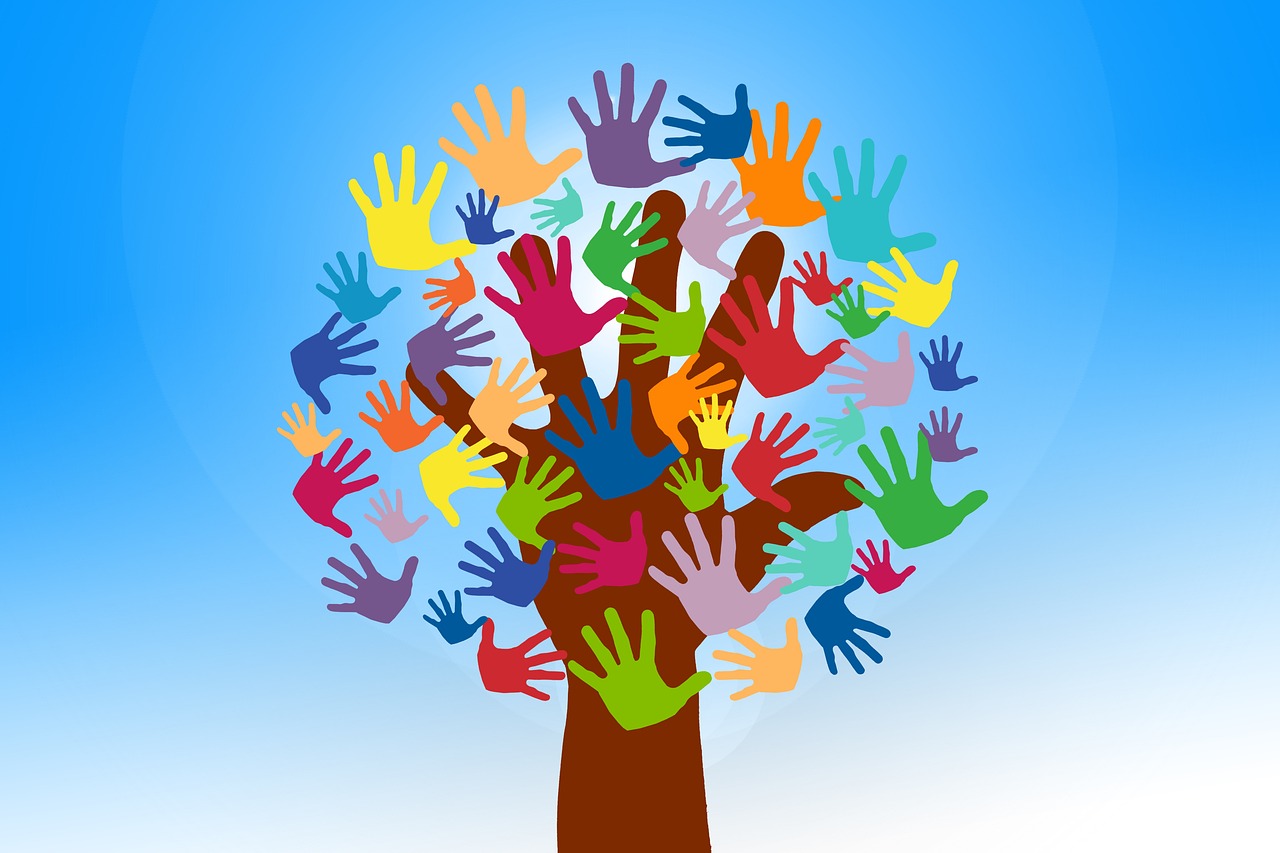
Search and Rescue
This article explores the critical contributions of volunteers during natural disasters, highlighting their roles, challenges, training, and the impact they have on communities in crisis situations.
Understanding the significance of volunteer efforts in disaster management can illuminate how communities come together to provide assistance and support during emergencies, ultimately saving lives and resources.
Volunteers can take on various roles during disasters, from first responders to logistical support. Each role is vital for effective disaster response and recovery, showcasing the diverse skills volunteers bring.
First responders are often the first line of defense in emergencies, providing immediate assistance and care. Their quick actions can significantly mitigate the impact of disasters on affected populations.
Volunteers with medical training can provide essential healthcare services, including triage and first aid, ensuring that those injured in disasters receive timely medical attention.
Search and rescue volunteers play a crucial role in locating and assisting individuals trapped or missing after a disaster. Often, these brave individuals work tirelessly in challenging conditions, facing the elements and the aftermath of destruction to save lives. Their efforts are not only physically demanding but also emotionally taxing, as they confront the realities of loss and despair in the wake of a disaster.
These volunteers are typically organized into teams that may include trained professionals and community members alike. They use a variety of tools and techniques, including:
- Canine Units: Dogs trained to detect human scent can be invaluable in locating survivors.
- Drone Technology: Drones equipped with cameras can survey large areas quickly, helping teams identify locations that may need immediate attention.
- Rescue Equipment: Specialized gear, such as ropes, harnesses, and medical supplies, is essential for safely extracting individuals from hazardous situations.
Moreover, search and rescue operations often require coordination with local authorities and other organizations to ensure that efforts are not duplicated and resources are used efficiently. This collaboration is essential, as it allows volunteers to focus on their primary mission: saving lives.
Training programs for volunteers are essential to equip them with the necessary skills and knowledge for effective disaster response, enhancing their confidence and competence in high-pressure situations.
Community training initiatives focus on preparing volunteers through workshops and simulations, fostering a culture of readiness and resilience in local populations.
Volunteers often collaborate with local organizations and agencies, enhancing their training and resources, which leads to more coordinated and effective disaster response efforts.
Despite their dedication, volunteers face numerous challenges during disasters, including physical exhaustion, emotional stress, and logistical hurdles, which can impact their effectiveness and well-being.
The emotional toll of witnessing suffering and devastation can weigh heavily on volunteers, necessitating support systems to help them cope with stress and trauma during and after their service.
Limited resources and funding can hinder volunteer efforts, making it essential for organizations to find sustainable ways to support and equip volunteers adequately for their critical roles.
The contributions of volunteers during natural disasters can significantly influence recovery outcomes, demonstrating the power of community action and solidarity in times of crisis.
Volunteer efforts enhance community resilience by fostering connections among residents, building trust, and creating a shared sense of purpose that strengthens social bonds during and after disasters.
Post-disaster, volunteers often play a vital role in long-term recovery efforts, helping communities rebuild and recover, ensuring that affected populations receive the support they need to return to normalcy.
Q1: How can I become a volunteer in disaster management?
A1: You can start by reaching out to local organizations or agencies involved in disaster response. Many offer training programs and opportunities for community involvement.
Q2: What skills are beneficial for volunteers in search and rescue?
A2: Skills such as first aid, navigation, teamwork, and effective communication are crucial. Physical fitness and the ability to remain calm under pressure are also important.
Q3: Are there age restrictions for volunteering in disaster management?
A3: While many organizations welcome volunteers of all ages, certain roles, especially those involving physical labor or medical assistance, may have age restrictions for safety reasons.
Q4: How can I support volunteers if I can't volunteer myself?
A4: You can support volunteers by donating supplies, funding, or offering logistical support. Additionally, spreading awareness about their efforts can help garner more community involvement.
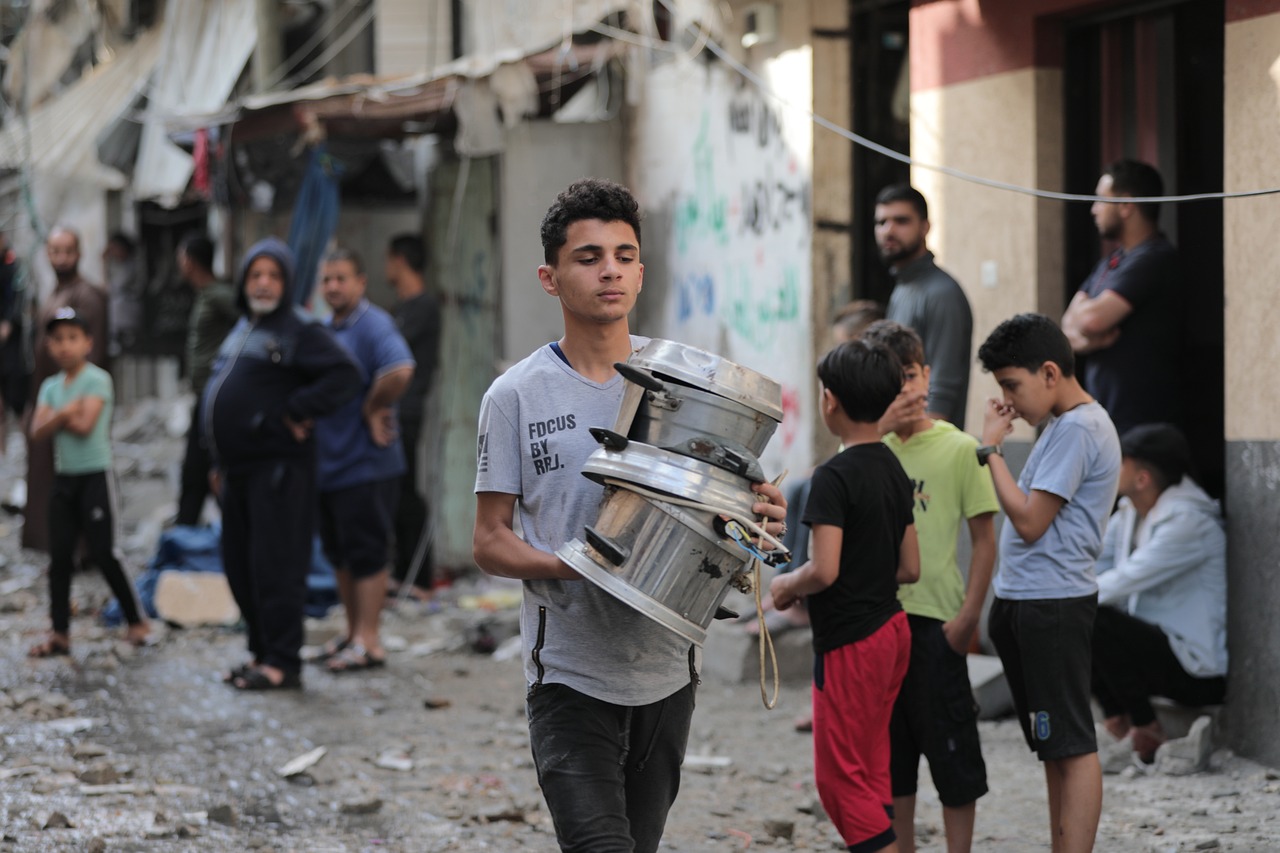
Logistical Support
When disaster strikes, becomes a lifeline for affected communities. Volunteers step in to ensure that essential supplies, food, and shelter reach those in need. Imagine a ship lost at sea; without a compass, it struggles to find its way. Similarly, during a disaster, without effective logistical operations, the entire relief effort can flounder. Volunteers play multiple roles in this critical area, from managing supply chains to coordinating transportation, all while working under immense pressure.
One of the primary responsibilities of volunteers in logistical support is supply distribution. This involves organizing and delivering food, water, clothing, and medical supplies to various locations. Volunteers often work with local agencies and organizations to identify the most pressing needs and ensure that these resources are allocated efficiently. For instance, they might set up distribution centers where affected individuals can quickly access the essentials they require for survival. Their ability to adapt to changing conditions—such as blocked roads or unexpected influxes of people—demonstrates the importance of flexibility in disaster response.
Additionally, volunteers are crucial in shelter management. After a disaster, many people find themselves displaced and in need of safe places to stay. Volunteers help set up temporary shelters, ensuring that they are equipped with basic amenities like food, clean water, and sanitation facilities. They also assist in maintaining order within these shelters, creating a sense of community among those who have lost so much. This role not only requires physical presence but also emotional intelligence, as volunteers often serve as a source of comfort and support for those coping with trauma.
Furthermore, transportation logistics play a significant role in disaster response. Volunteers coordinate the movement of supplies and people, ensuring that resources are delivered where they are most needed. They might use personal vehicles, trucks, or even bicycles to navigate through challenging terrains. In some cases, volunteers work alongside local authorities to establish transportation hubs, which serve as central points for distributing aid. These hubs can be crucial in reaching remote or hard-hit areas that might otherwise be overlooked.
To illustrate the importance of logistics in disaster management, consider the following table that highlights key logistical tasks and their impact:
| Logistical Task | Description | Impact |
|---|---|---|
| Supply Distribution | Organizing and delivering essential supplies | Ensures survival and meets immediate needs |
| Shelter Management | Setting up and maintaining temporary shelters | Provides safety and community for displaced individuals |
| Transportation Coordination | Facilitating the movement of resources and people | Enhances efficiency and access to aid |
Ultimately, the role of volunteers in logistical support cannot be overstated. They are the unsung heroes who work tirelessly behind the scenes, ensuring that relief efforts are not only effective but also compassionate. Their dedication and hard work help to transform chaotic situations into organized responses, allowing communities to recover and rebuild after disasters. By fostering collaboration and communication among various stakeholders, volunteers help create a network of support that can withstand the challenges posed by any emergency.
- What types of logistical support do volunteers provide during disasters? Volunteers assist in supply distribution, shelter management, and transportation coordination.
- How can I get involved as a volunteer in disaster relief efforts? You can contact local organizations or agencies that focus on disaster response to find volunteer opportunities.
- What training is required for volunteers in logistical support? While formal training may be beneficial, many organizations offer on-the-job training to prepare volunteers for specific roles.
- How do volunteers ensure that resources reach those in need? Volunteers work closely with local agencies to assess needs and prioritize resource allocation effectively.
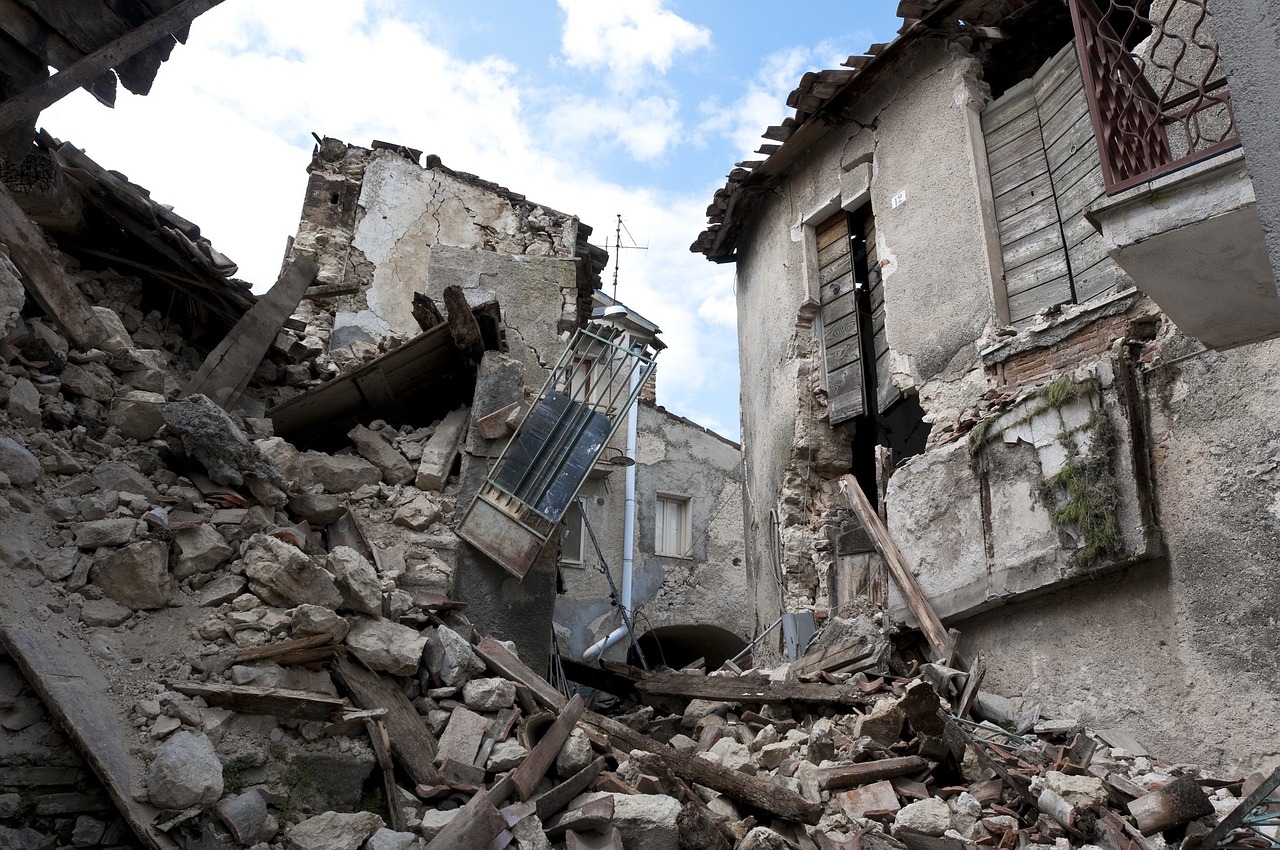
Training and Preparedness
When it comes to disaster management, training and preparedness are not just buzzwords; they are the backbone of effective volunteer efforts. Imagine a scenario where a community is struck by a natural disaster, and volunteers, equipped with the right skills and knowledge, spring into action with confidence. This is the result of thorough training programs designed to prepare individuals for the unpredictable nature of disasters. These programs not only enhance the volunteers' capabilities but also instill a sense of readiness that can make all the difference in high-pressure situations.
Community training initiatives often serve as the first line of defense in preparing volunteers. These initiatives typically include a variety of workshops and simulations that mimic real-life disaster scenarios. By engaging in hands-on training, volunteers learn how to respond effectively, whether it's providing first aid, coordinating shelter operations, or managing logistics. The key here is that practice makes perfect. When volunteers are familiar with the processes and protocols, they can react swiftly when disaster strikes.
Moreover, collaboration with local organizations and agencies amplifies the effectiveness of training programs. By partnering with established entities, volunteers gain access to a wealth of resources and expertise that enrich their learning experience. For instance, organizations may offer specialized training sessions led by seasoned professionals who have firsthand experience in disaster response. This collaboration not only enhances the skill set of volunteers but also fosters a network of support that can be crucial during actual emergencies.
In addition to practical skills, training programs emphasize the importance of emotional preparedness. Volunteers often face distressing situations, and being mentally equipped to handle the emotional toll is essential. Workshops on stress management and coping strategies help volunteers develop resilience, enabling them to remain effective even in the most challenging environments. The ability to support each other emotionally creates a strong team dynamic that can significantly improve overall response efforts.
To summarize, effective training and preparedness are critical components of volunteer efforts in disaster management. They empower individuals with the skills, knowledge, and emotional resilience needed to navigate the complexities of crisis situations. By investing in comprehensive training programs and fostering collaboration with local organizations, communities can ensure that their volunteers are not just participants but are well-prepared heroes ready to make a difference when it matters most.
- What types of training programs are available for disaster volunteers?
Training programs can include first aid and CPR certification, disaster response simulations, logistical management workshops, and emotional resilience training.
- How can I get involved as a volunteer in disaster management?
You can contact local disaster response organizations or community centers that offer volunteer programs and training opportunities.
- What should I do if I feel overwhelmed while volunteering during a disaster?
It's important to seek support from fellow volunteers and supervisors. Many organizations provide mental health resources to help volunteers cope with stress.
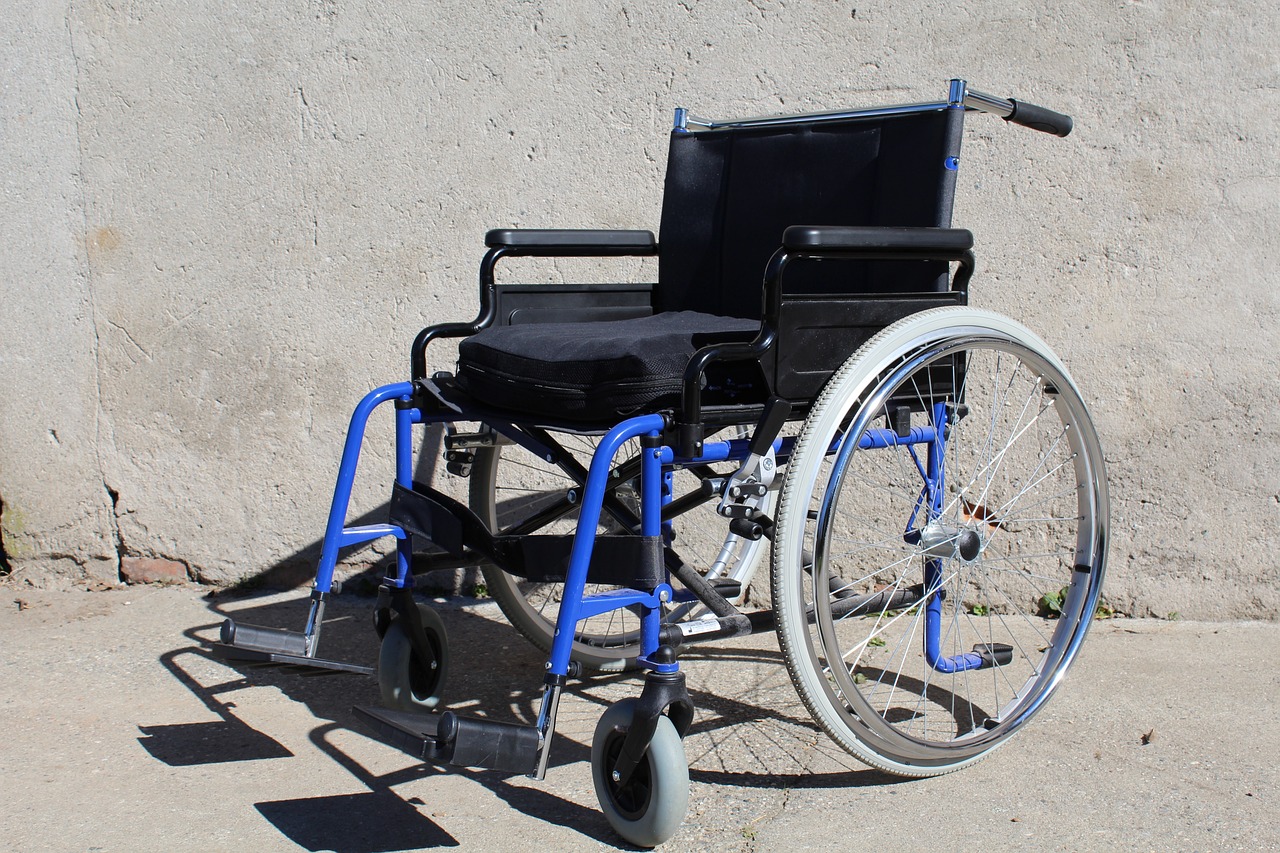
Community Training Initiatives
When it comes to disaster management, play a pivotal role in preparing volunteers for the challenges they may face. These training programs are designed not only to impart essential skills but also to foster a sense of community spirit and resilience. Imagine a neighborhood coming together, learning how to respond to emergencies, and building a safety net for one another—this is the essence of community training.
One of the most effective ways to implement these initiatives is through workshops and simulations. These hands-on experiences allow volunteers to practice their skills in a controlled environment, enhancing their confidence and readiness for real-life situations. For example, a simulation might involve a mock disaster scenario where volunteers must work together to triage victims, manage supplies, and coordinate rescue efforts. Such exercises not only teach practical skills but also highlight the importance of teamwork and communication.
Moreover, community training initiatives often include a variety of topics, such as:
- Basic first aid and CPR
- Search and rescue techniques
- Emergency communication protocols
- Logistical planning for disaster response
These programs are typically organized by local organizations, such as community centers, non-profits, and even local governments. By collaborating with these entities, volunteers can access expert-led training and resources that significantly enhance their preparedness. This collaboration not only ensures that volunteers are well-equipped with the necessary knowledge but also promotes a unified approach to disaster response.
Additionally, fostering a culture of readiness goes beyond just training. It involves creating an environment where community members feel empowered to take action. Regular drills and community meetings can help maintain engagement and keep everyone informed about the latest best practices in disaster management. When individuals feel informed and prepared, they are more likely to step up when disaster strikes.
In conclusion, community training initiatives are essential for building a resilient volunteer base capable of responding effectively to natural disasters. By investing time and resources into training programs, communities can ensure that they are not just reacting to crises, but actively preventing and mitigating their impacts. The stronger the training, the more confident the volunteers, and ultimately, the better the outcomes for everyone involved.
- What types of training programs are available for volunteers? Training programs can include first aid, search and rescue, logistical support, and emergency communication.
- How can I get involved in my community's volunteer training initiatives? Check with local community centers, non-profits, or government agencies to find out about upcoming training sessions.
- Are there any costs associated with volunteering and training? Many community training initiatives are free or low-cost, funded by local organizations or grants.
- How often should training be updated? It's recommended to conduct refresher courses and drills regularly to keep skills sharp and knowledge up-to-date.
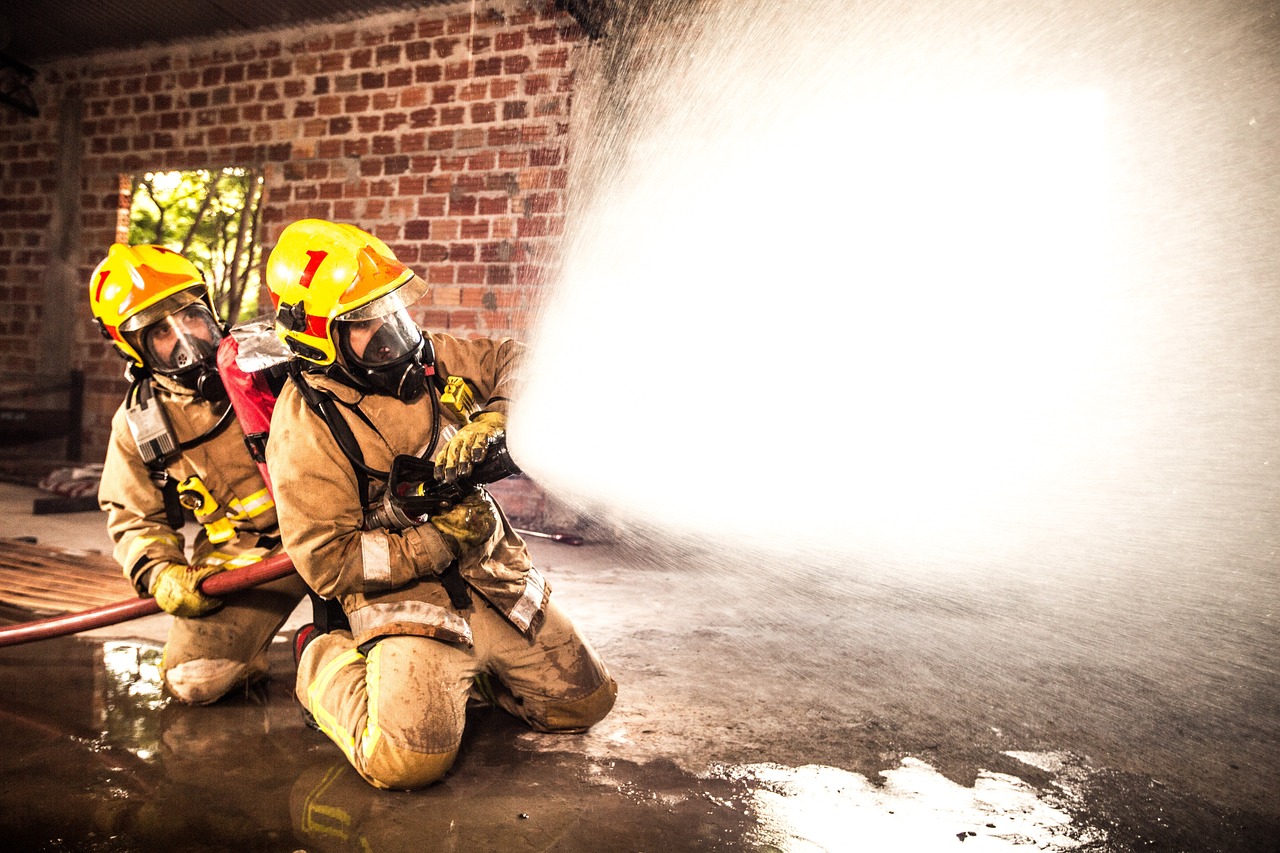
Collaboration with Organizations
When it comes to disaster management, is not just a buzzword—it's a lifeline. Volunteers often find themselves working alongside various local, national, and even international organizations that specialize in emergency response. This partnership is crucial because it enhances the effectiveness of disaster response efforts, ensuring that every action taken is well-coordinated and impactful. Imagine a well-oiled machine, where each part functions in harmony to achieve a common goal. That's what happens when volunteers collaborate with established organizations.
Organizations such as the Red Cross, local fire departments, and community service groups provide essential training and resources that empower volunteers. For instance, many of these organizations offer workshops and simulation exercises that prepare volunteers for the unpredictable nature of disasters. This training not only equips volunteers with practical skills but also boosts their confidence, allowing them to act decisively in high-pressure situations.
Moreover, collaboration leads to the sharing of vital resources. Organizations often have access to supplies, equipment, and funding that individual volunteers might lack. This means that when volunteers are deployed, they can operate with the necessary tools at their disposal, making their efforts more effective. For example, a table illustrating the resources provided by various organizations could look like this:
| Organization | Resources Provided | Volunteer Training Opportunities |
|---|---|---|
| Red Cross | Medical supplies, shelter, food | First Aid, CPR, Disaster Response |
| Local Fire Department | Fire safety equipment, rescue tools | Firefighting techniques, Search and Rescue |
| Community Service Groups | Logistical support, transportation | Community preparedness, Emergency management |
In addition to training and resources, collaboration fosters a sense of community among volunteers and organizations. It creates a network of support that can be invaluable during a disaster. Volunteers can share experiences, learn from one another, and build lasting relationships that extend beyond the immediate crisis. This camaraderie not only enhances morale but also contributes to a more resilient community overall.
However, it’s important to acknowledge that collaboration is not without its challenges. Miscommunication can occur, especially when multiple organizations are involved, leading to confusion and inefficiencies. Therefore, establishing clear lines of communication and roles is essential. Regular meetings and updates can help mitigate these issues, ensuring everyone is on the same page.
In summary, the collaboration between volunteers and organizations is a powerful force in disaster management. By pooling resources, sharing knowledge, and working together, they can create a more effective and responsive disaster relief effort. It's a beautiful reminder of how, in times of crisis, people can come together to make a difference, proving that teamwork truly makes the dream work.
- What roles do volunteers typically play in disaster management? Volunteers can serve as first responders, logistical support, and provide emotional support to affected individuals.
- How can I become a volunteer in disaster management? You can start by contacting local organizations, such as the Red Cross, to find training programs and volunteer opportunities.
- What training do volunteers receive? Training varies by organization but often includes first aid, CPR, emergency management, and logistical support.
- What challenges do volunteers face during disasters? Volunteers may experience physical exhaustion, emotional stress, and resource limitations during their service.
- How do volunteers impact recovery efforts? Volunteers play a crucial role in rebuilding communities, providing essential services, and fostering resilience among residents.

Challenges Faced by Volunteers
Despite the incredible dedication and selflessness that volunteers display during natural disasters, they encounter a myriad of challenges that can hinder their effectiveness and well-being. One of the most pressing issues is the emotional and physical strain that comes with witnessing the aftermath of a disaster. Imagine being on the front lines, helping those who have lost everything, while also grappling with your own feelings of helplessness and sorrow. This emotional toll can be overwhelming, necessitating robust support systems to help volunteers cope with the stress and trauma they experience both during and after their service.
Moreover, volunteers often face resource limitations that can significantly impact their ability to provide assistance. Many organizations rely heavily on donations and funding to equip their volunteers with the necessary tools and supplies. When resources are scarce, volunteers may find themselves in situations where they are unable to deliver the level of support that communities desperately need. This can lead to frustration and burnout, as volunteers are eager to help but feel constrained by the lack of materials or funding.
Another challenge is the logistical hurdles that arise during disaster response. Coordinating efforts among various organizations, managing supplies, and ensuring that help reaches the right places at the right times can be a complex and chaotic process. Volunteers often need to navigate through bureaucratic red tape, which can slow down their response efforts. In many cases, they may also have to work under extreme conditions, such as inclement weather or unsafe environments, which can further complicate their tasks.
Furthermore, the physical demands of disaster response can take a toll on volunteers. Long hours, strenuous activities, and the need for constant vigilance can lead to exhaustion. Volunteers need to be in good physical condition to effectively perform their roles, yet many may not have the proper training or preparation for the physical challenges they face. This is why it’s crucial for organizations to implement training programs that focus not only on skills but also on physical preparedness.
In addition to these challenges, there is the issue of volunteer retention. Many volunteers are driven by a sense of duty and altruism, but after experiencing the intense challenges of disaster response, they may feel disillusioned or overwhelmed. Organizations must prioritize volunteer support and recognition to maintain engagement and encourage long-term commitment. Providing avenues for volunteers to share their experiences can foster a sense of community and help mitigate feelings of isolation.
To summarize, while volunteers are the backbone of disaster response efforts, they face significant challenges that can affect their performance and mental health. Addressing these challenges through adequate training, resource allocation, and emotional support is essential. By recognizing and tackling these hurdles, we can ensure that volunteers remain effective and motivated, ultimately leading to better outcomes for the communities they serve.
- What types of support do volunteers typically provide during disasters? Volunteers may engage in various activities, including providing medical assistance, participating in search and rescue operations, or helping with logistical support like supply distribution.
- How can organizations better support volunteers? Organizations can support volunteers by offering training programs, mental health resources, and recognizing their efforts through appreciation events or awards.
- What are some common emotional challenges faced by volunteers? Volunteers may experience stress, trauma, and feelings of helplessness after witnessing suffering and devastation, necessitating support systems to help them cope.
- How can I become a volunteer during a disaster? Interested individuals can reach out to local organizations, disaster response agencies, or community groups that offer volunteer opportunities during emergencies.
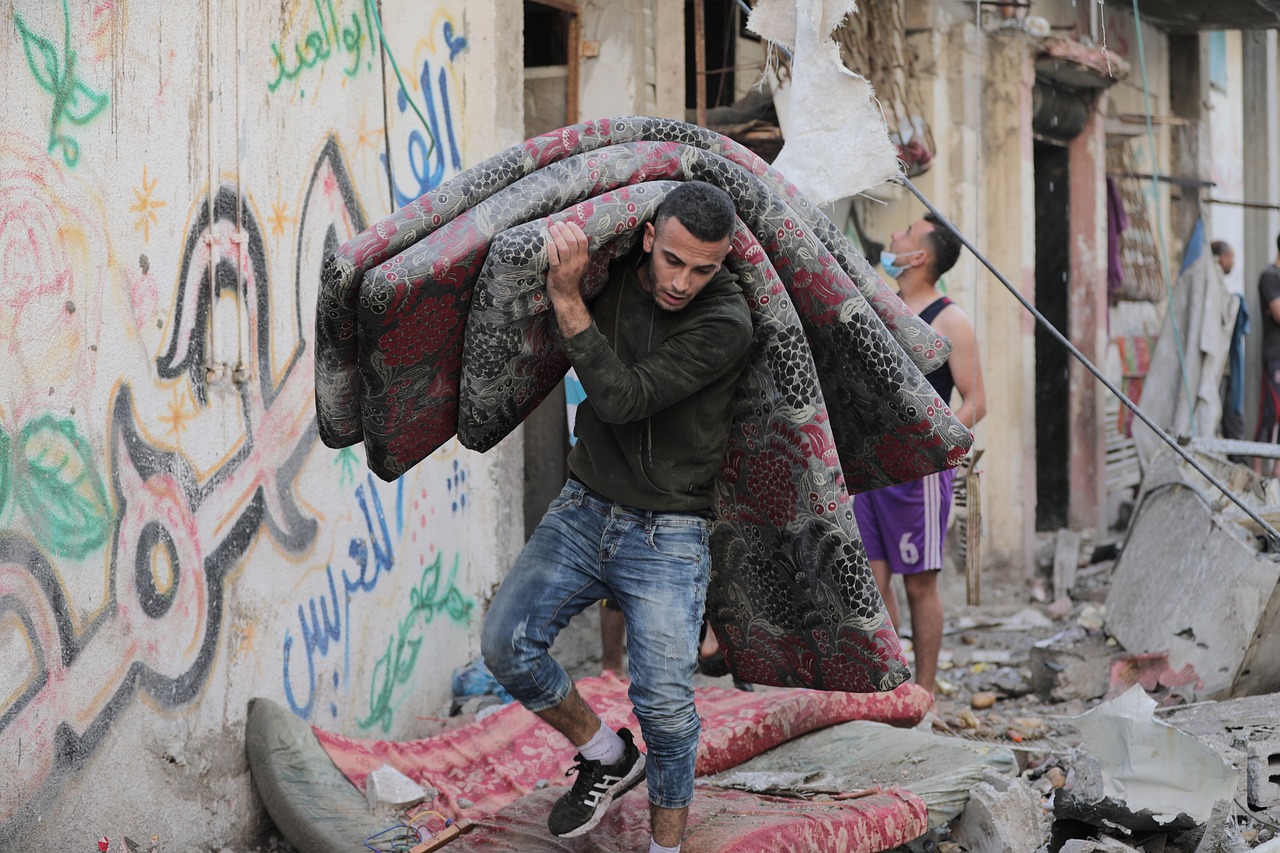
Emotional and Physical Strain
Volunteering during natural disasters is not just about lending a helping hand; it often comes with a heavy emotional and physical toll. Imagine being thrust into a chaotic scene where people are in distress, and the environment is filled with uncertainty. Volunteers frequently witness the aftermath of devastation, which can lead to feelings of helplessness and sadness. This emotional strain can be profound, as volunteers grapple with the suffering of others while trying to maintain their own mental well-being.
Moreover, the physical demands of disaster response can be overwhelming. Volunteers may work long hours in challenging conditions, often with little rest. This relentless pace can lead to exhaustion, making it difficult for them to function effectively. The combination of emotional fatigue and physical weariness can create a cycle that impacts their ability to provide the necessary support. To illustrate this, consider the following table that outlines some common emotional and physical challenges faced by volunteers:
| Type of Strain | Description |
|---|---|
| Emotional Strain | Feelings of sadness, anxiety, and helplessness due to witnessing trauma and loss. |
| Physical Exhaustion | Fatigue from long hours of work, often in harsh conditions, leading to decreased effectiveness. |
| Stress | High-pressure situations can lead to increased stress levels, impacting mental health. |
| Burnout | Prolonged exposure to emotionally taxing situations can result in burnout, reducing motivation. |
To combat these strains, it is essential for organizations to implement support systems for volunteers. This might include providing access to mental health resources, regular breaks, and opportunities for debriefing after intense experiences. By prioritizing the well-being of volunteers, organizations can ensure that these dedicated individuals remain effective and resilient in the face of adversity.
Ultimately, recognizing and addressing the emotional and physical strain on volunteers is crucial for sustaining their efforts. After all, they are not just helping others; they are also navigating their own journeys through trauma and recovery. By fostering a supportive environment, we can empower volunteers to continue their invaluable work in disaster management.
- What are the signs of emotional strain in volunteers? Common signs include irritability, withdrawal from social interactions, and difficulty concentrating.
- How can organizations support volunteers emotionally? Providing access to counseling services, peer support groups, and regular check-ins can help.
- Are there physical health risks associated with volunteering in disasters? Yes, volunteers may face risks such as fatigue, dehydration, and injuries due to strenuous activities.
- What can volunteers do to maintain their well-being during a disaster? It’s important for volunteers to take breaks, stay hydrated, and seek support when needed.
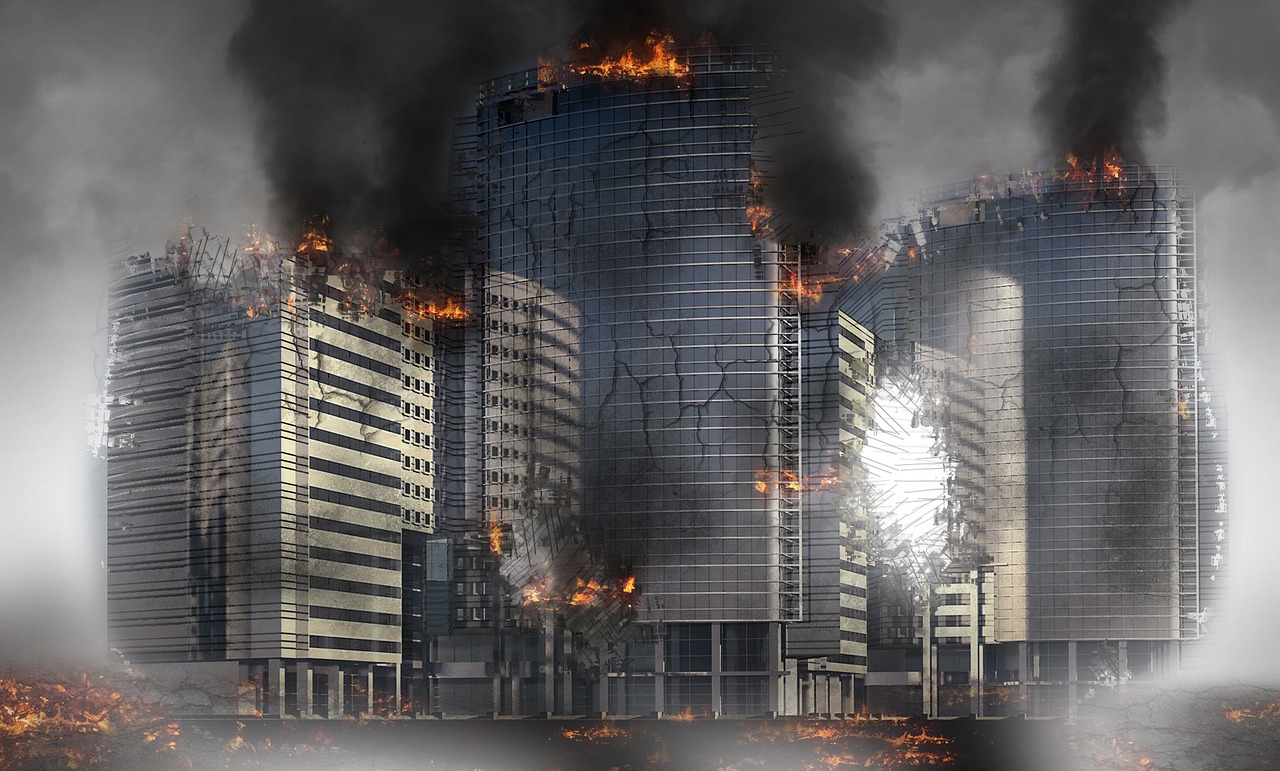
Resource Limitations
In the chaotic aftermath of natural disasters, one of the most pressing challenges volunteers face is the issue of . These limitations can manifest in various forms, from insufficient funding to a lack of essential supplies. Imagine a group of dedicated volunteers rushing to help a community devastated by a hurricane, only to find that they don't have enough food, water, or medical supplies to meet the immediate needs of the survivors. This scenario is all too common and can severely hinder the effectiveness of volunteer efforts.
Many organizations rely on donations and grants to fund their disaster response initiatives. However, these resources can be scarce, especially during large-scale disasters when multiple areas are affected simultaneously. The competition for funding can become fierce, leaving smaller organizations struggling to provide adequate support. Additionally, the logistics of acquiring and distributing resources can be daunting. Volunteers often find themselves navigating a complex web of supply chains, which can be further complicated by damaged infrastructure and communication breakdowns.
Moreover, the emotional and physical toll on volunteers can be exacerbated by these limitations. When volunteers are aware that they lack the necessary resources to help those in need, it can lead to feelings of frustration and helplessness. To combat these challenges, organizations must prioritize sustainable funding models and resource management strategies. This could include:
- Establishing partnerships with local businesses and community organizations to create a reliable supply network.
- Implementing training programs that equip volunteers with skills in resource management and logistics.
- Encouraging community involvement to raise awareness and funds for disaster preparedness.
By addressing resource limitations proactively, organizations can enhance the effectiveness of their volunteer efforts, ensuring that those who step up in times of crisis are equipped to make a real difference. In the end, it's about creating a resilient support system that empowers volunteers and the communities they serve, turning challenges into opportunities for growth and recovery.
Q: How can volunteers help in resource-limited situations?
A: Volunteers can assist by organizing local fundraising events, collecting donations, and raising awareness about the needs of affected communities. They can also participate in training programs to learn how to manage resources effectively.
Q: What types of resources are typically in short supply during disasters?
A: Commonly limited resources include food, clean water, medical supplies, shelter materials, and transportation. Identifying these needs early on can help streamline efforts to gather necessary supplies.
Q: How can communities prepare for potential resource limitations during a disaster?
A: Communities can prepare by creating local emergency plans, establishing partnerships with organizations, and conducting training exercises to ensure everyone knows their roles and responsibilities in a crisis.
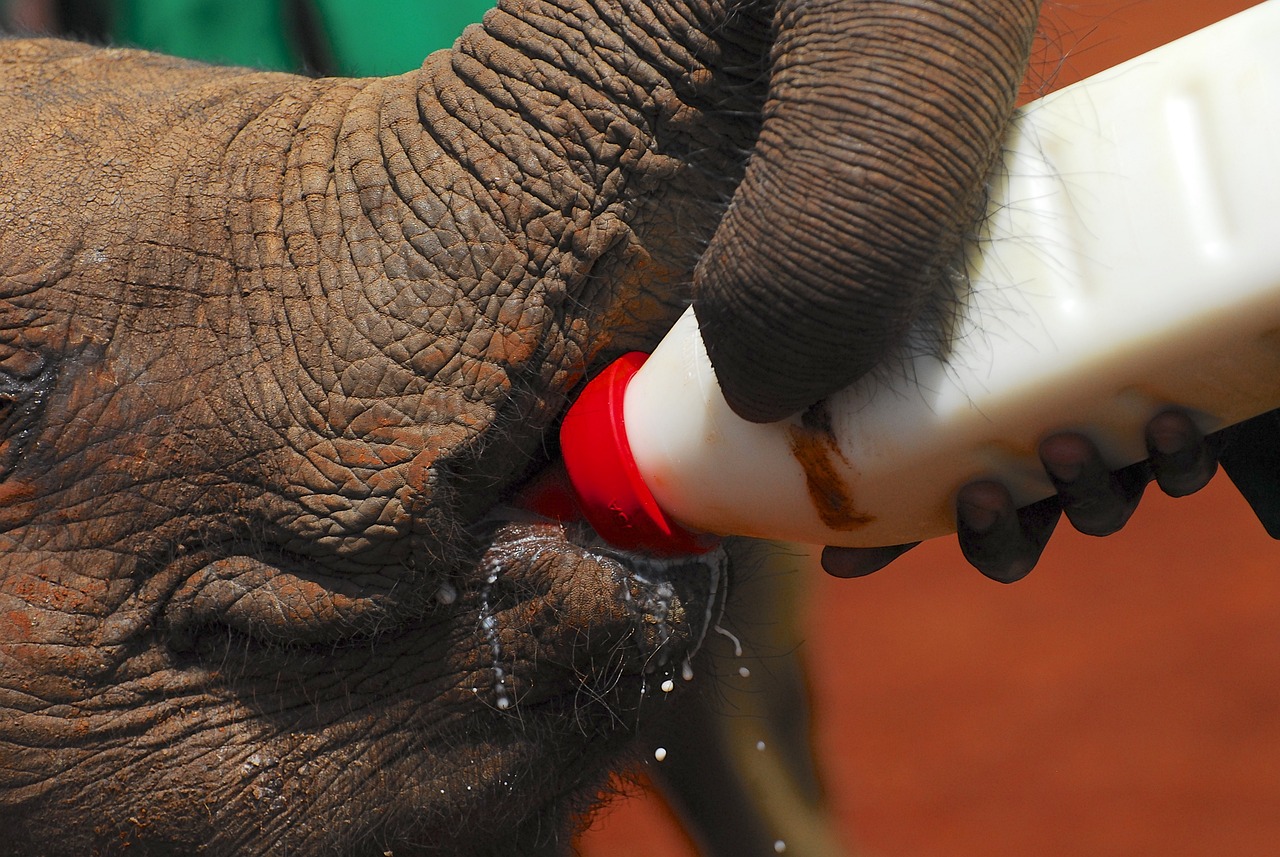
The Impact of Volunteer Efforts
The contributions of volunteers during natural disasters can significantly influence recovery outcomes, demonstrating the power of community action and solidarity in times of crisis. When disaster strikes, it is often the local volunteers who are the first to respond, providing immediate assistance and emotional support to those affected. Their presence not only helps in the immediate aftermath but also lays the groundwork for long-term recovery efforts. Imagine a community devastated by a hurricane; amidst the chaos, volunteers emerge like beacons of hope, working tirelessly to restore normalcy.
One of the most profound impacts of volunteer efforts is the enhancement of community resilience. Volunteers foster connections among residents, building trust and creating a shared sense of purpose. This is crucial, as communities that come together during crises tend to recover faster. For instance, after a flood, volunteers might organize community meetings to assess needs and allocate resources effectively. This collaborative spirit not only aids in immediate recovery but also strengthens social bonds that last long after the disaster has passed. The sense of unity created can be likened to a tightly woven fabric; when one thread is pulled, the entire structure holds together, showcasing the strength of community ties.
In addition to immediate relief, volunteers play a vital role in long-term recovery assistance. They help communities rebuild and recover, ensuring that affected populations receive the support they need to return to normalcy. This can include a range of activities, from rebuilding homes to providing emotional support. For example, volunteers might assist in setting up temporary shelters or organizing food drives, which are essential for those who have lost everything. Their ongoing commitment not only aids in physical reconstruction but also addresses the emotional and psychological needs of the community, helping individuals cope with the trauma of their experiences.
Furthermore, the impact of volunteer efforts extends beyond the immediate community. The collective action of volunteers can inspire others to contribute, creating a ripple effect of goodwill and assistance. This can lead to increased donations, more volunteers stepping forward, and greater awareness of the needs of disaster-affected areas. The synergy created by volunteers can be likened to a snowball effect, where small actions accumulate and grow into significant movements of support and recovery.
To summarize, the impact of volunteer efforts during natural disasters is profound and multifaceted. From fostering community resilience to providing long-term recovery assistance, volunteers are indispensable in the healing process. Their selfless actions not only help those in immediate need but also strengthen the fabric of the community, ensuring that it emerges more united and resilient in the face of future challenges.
- What roles do volunteers play during natural disasters? Volunteers can serve as first responders, provide medical assistance, engage in search and rescue operations, and offer logistical support, among other roles.
- How can I become a volunteer in disaster management? You can start by reaching out to local organizations that focus on disaster preparedness and response. Many offer training programs and opportunities for involvement.
- What challenges do volunteers face during disasters? Volunteers often encounter physical exhaustion, emotional stress, and logistical hurdles, which can impact their effectiveness and well-being.
- How do volunteer efforts enhance community resilience? By fostering connections and trust among residents, volunteers help build a shared sense of purpose that strengthens social bonds during and after disasters.

Community Resilience
The concept of is pivotal in understanding how neighborhoods and towns bounce back from the chaos of natural disasters. When disaster strikes, it’s not just about the immediate response; it’s also about how well a community can recover and rebuild in the aftermath. Volunteers play a crucial role in this process, acting as the glue that binds the community together during tough times.
One of the most significant aspects of community resilience is the connections formed among residents. In times of crisis, people often come together, sharing resources, knowledge, and emotional support. This bonding creates a robust network that can effectively respond to emergencies. For instance, when a flood hits a neighborhood, neighbors might band together to help each other salvage belongings, distribute food, or provide shelter. Such actions not only meet immediate needs but also foster a sense of unity that can last long after the crisis has passed.
Moreover, the act of volunteering itself can enhance community resilience. When individuals engage in volunteer efforts, they not only contribute to recovery but also develop skills and relationships that strengthen their communities. Here are a few ways in which volunteerism boosts resilience:
- Skill Development: Volunteers often receive training that equips them with valuable skills, such as first aid, crisis management, and logistical planning, making them assets in future emergencies.
- Trust Building: Working together in high-stress situations fosters trust among community members, which is essential for coordinated responses in future crises.
- Shared Purpose: Engaging in volunteer activities cultivates a sense of shared purpose, motivating community members to look out for one another and work collaboratively towards recovery.
In addition to these interpersonal benefits, community resilience is also strengthened through collaborative efforts with local organizations and government agencies. When volunteers align their efforts with established organizations, they can leverage resources more efficiently, ensuring that aid reaches those who need it most. This synergy not only maximizes the impact of volunteer efforts but also promotes a culture of preparedness that can mitigate the effects of future disasters.
Ultimately, the resilience of a community is tested not just in the face of disaster but also in the recovery phase. Volunteers often become the backbone of long-term recovery efforts, helping neighborhoods to rebuild physically and emotionally. They assist in everything from clearing debris to organizing community events that foster healing and solidarity. Through these efforts, volunteers help to restore a sense of normalcy, allowing communities to thrive once again.
In conclusion, community resilience is much more than a buzzword; it’s a vital quality that can determine a community’s ability to withstand and recover from disasters. The contributions of volunteers are invaluable in this process, as they not only provide immediate assistance but also help to forge lasting connections that empower communities to face future challenges with confidence and strength.
- What is community resilience? Community resilience refers to the ability of a community to withstand, adapt to, and recover from adverse situations, including natural disasters.
- How do volunteers contribute to community resilience? Volunteers enhance community resilience by providing immediate support during crises, developing skills, fostering relationships, and promoting trust among residents.
- What types of training do volunteers receive? Volunteers may receive training in first aid, emergency response, logistical planning, and community organization to better equip them for disaster situations.
- Can volunteer efforts impact long-term recovery? Yes, volunteers play a crucial role in long-term recovery by helping communities rebuild and ensuring that affected populations receive the necessary support.
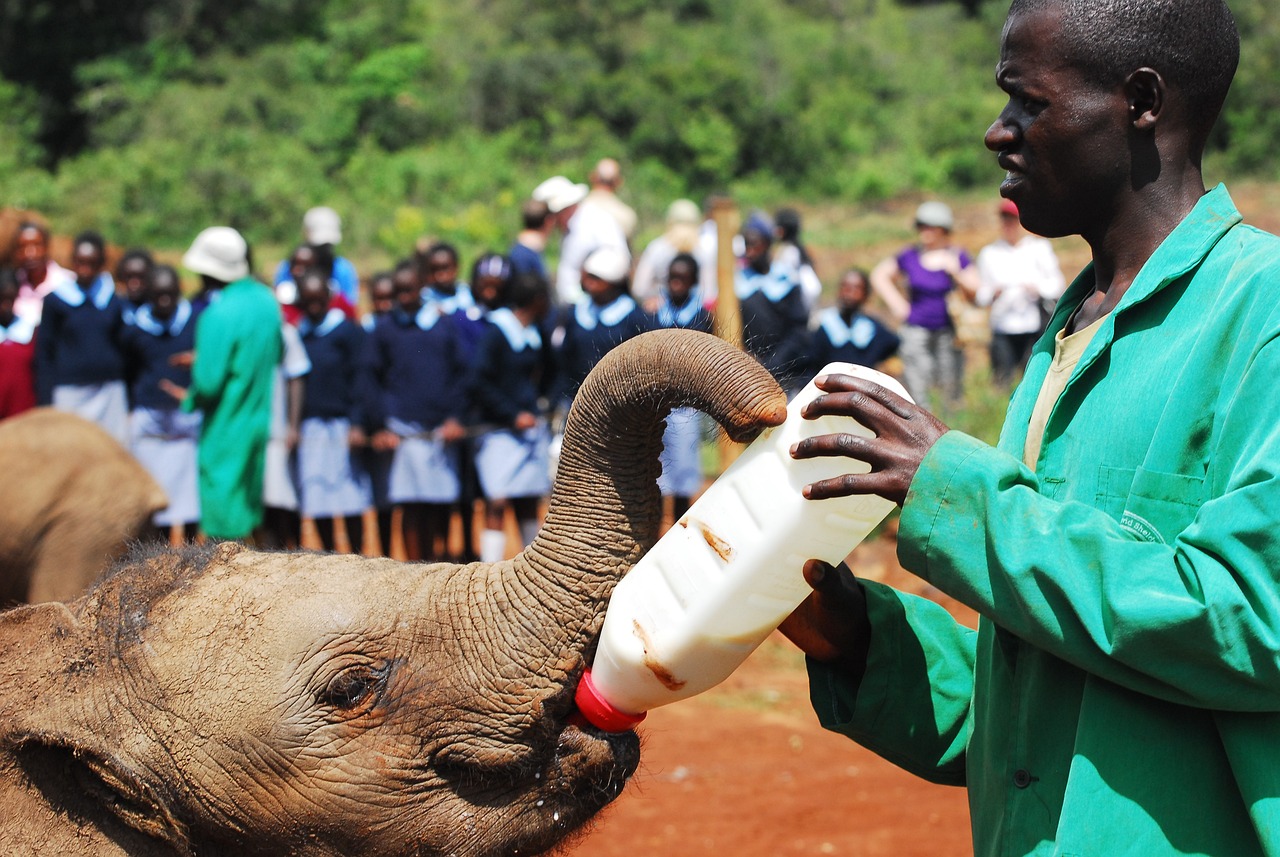
Long-term Recovery Assistance
After the dust settles and the immediate chaos of a natural disaster fades, the road to recovery begins. This is where the invaluable efforts of volunteers truly shine. is not just about rebuilding structures; it's about mending hearts, restoring lives, and revitalizing communities. Volunteers step in to fill the gaps left by official aid, providing a much-needed human touch in the recovery process.
One of the primary roles of volunteers in long-term recovery is community engagement. They help to organize community meetings, where residents can voice their needs and concerns. This engagement is crucial because it fosters a sense of ownership among community members, empowering them to take an active role in their recovery. Volunteers listen, facilitate discussions, and ensure that everyone has a voice, creating an atmosphere of collaboration and unity.
Moreover, volunteers often assist in rebuilding efforts, whether that's helping to repair homes, schools, or community centers. They bring a variety of skills to the table, from construction to counseling, which are essential in the recovery phase. For instance, skilled tradespeople can provide hands-on support, while others might help with paperwork for assistance programs or offer emotional support to those struggling with loss. This multifaceted approach ensures that recovery is holistic and addresses both physical and emotional needs.
Another significant aspect of long-term recovery is the development of sustainable practices. Volunteers often work with organizations to implement programs that not only rebuild but also enhance the resilience of communities against future disasters. This might include creating better infrastructure, promoting disaster preparedness education, or establishing local support networks. By focusing on sustainability, volunteers help communities not just to recover, but to thrive in the face of future challenges.
In addition to these roles, volunteers also play a critical part in fundraising and resource mobilization. They organize events, campaigns, and drives to gather funds and supplies that are essential for ongoing recovery efforts. This financial support can be the lifeblood for many recovery initiatives, allowing communities to access the resources they need to rebuild and recover effectively.
Ultimately, the impact of volunteer efforts in long-term recovery is profound. They help to create a sense of hope and resilience in communities that have faced unimaginable hardships. With their support, communities can not only rebuild but also emerge stronger, more connected, and better prepared for the future. The dedication and compassion of volunteers remind us of the strength of human spirit and the power of community in overcoming adversity.
- What types of long-term recovery assistance do volunteers provide?
Volunteers assist with community engagement, rebuilding efforts, sustainable practices, and fundraising initiatives. - How can I get involved in volunteer recovery efforts?
You can contact local organizations involved in disaster recovery, participate in training programs, or join community meetings to find opportunities. - What skills are needed for long-term recovery volunteering?
Skills can range from construction and logistics to counseling and fundraising. Every contribution is valuable! - How do volunteers help with emotional support during recovery?
Volunteers often provide a listening ear, facilitate support groups, and help connect individuals with mental health resources.
Frequently Asked Questions
- What roles do volunteers play in natural disaster management?
Volunteers take on a variety of roles during natural disasters, including first responders, medical assistance providers, search and rescue teams, and logistical support. Each role is crucial in ensuring effective disaster response and recovery, showcasing the diverse skills and dedication that volunteers bring to the table.
- How can I get involved as a volunteer during a disaster?
Getting involved as a volunteer typically starts with reaching out to local organizations or agencies that focus on disaster management. Many of these groups offer training programs and workshops to prepare you for the challenges you might face. It’s a great way to contribute to your community while also gaining valuable skills.
- What kind of training do volunteers receive?
Volunteers often participate in community training initiatives that include workshops, simulations, and hands-on experiences. These programs are designed to equip volunteers with essential skills and knowledge, enhancing their confidence and effectiveness in high-pressure situations during a disaster.
- What challenges do volunteers face during disasters?
Volunteers encounter various challenges, such as physical exhaustion, emotional stress from witnessing trauma, and logistical hurdles like limited resources. These factors can impact their well-being and overall effectiveness, making it vital for organizations to provide adequate support and resources.
- How do volunteer efforts impact community resilience?
Volunteer efforts significantly enhance community resilience by fostering connections among residents, building trust, and creating a shared sense of purpose. This solidarity strengthens social bonds during and after disasters, enabling communities to recover more effectively and efficiently.
- What is the long-term impact of volunteer efforts after a disaster?
Post-disaster, volunteers play a critical role in long-term recovery efforts. They help communities rebuild and recover, ensuring that affected populations receive the support they need to return to normalcy. This ongoing assistance is vital for restoring hope and stability in the aftermath of a crisis.

